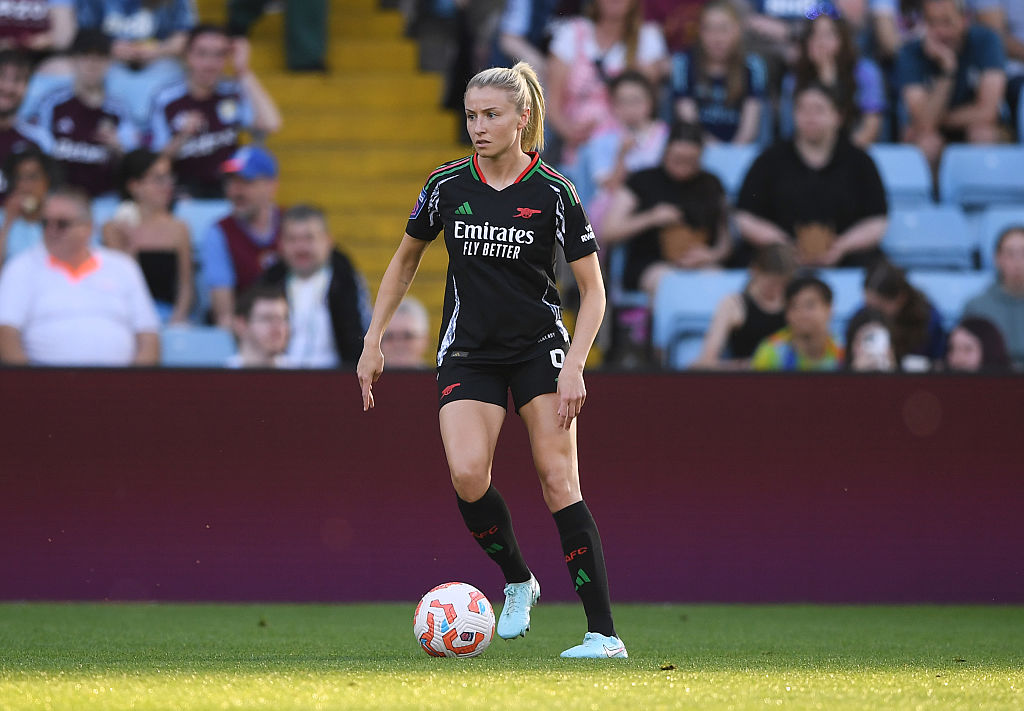Why Raheem Sterling is England's main man for qualifying
Michael Cox explains how Liverpool's teenage winger became English football's most exciting player...
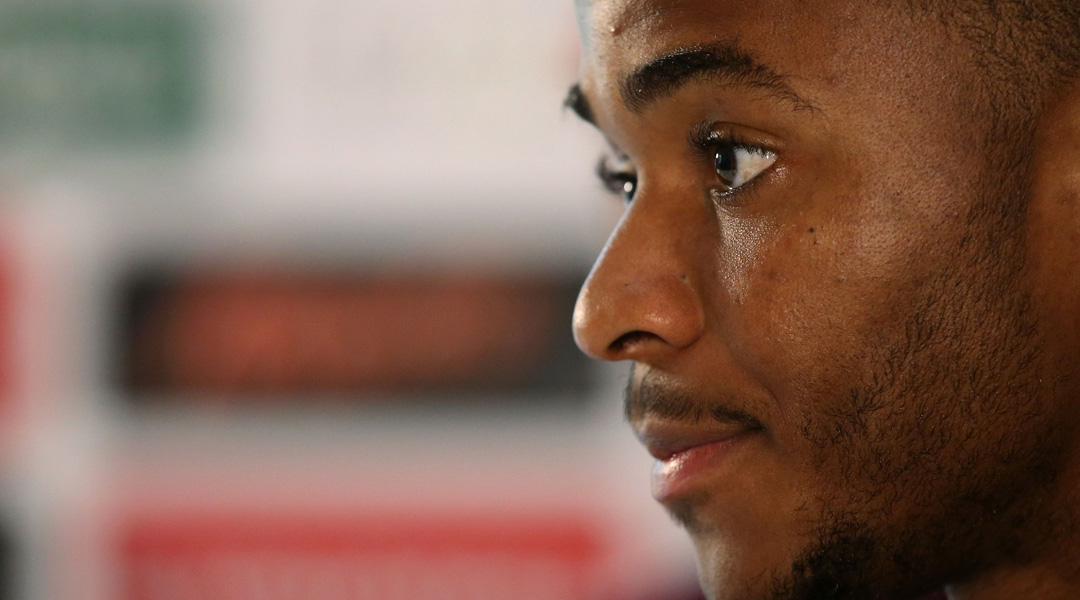
We’re constantly told youngsters need match practice to develop into top-class footballers, but for Raheem Sterling, it was a spell on the sidelines which accelerated his development into England’s most dangerous footballer.
Sterling became a first-team regular at Anfield earlier than expected, almost accidentally. A poor transfer window in summer 2012 left new Liverpool manager Brendan Rodgers without sufficient attacking options, and Sterling suddenly became a regular alongside Luis Suarez and Suso.
He made his full debut in Liverpool’s second game of 2012/13, a 2-2 draw against Manchester City, and then promptly started the next 15 matches – playing the full 90 minutes in 13. It was a recognition of his talent and his fine performances, but by Christmas, he was exhausted.
Seventeen-year-olds at big clubs are usually desperate for their big break – but Sterling was in need of a ‘break’ of a completely different form. Having played 15 consecutive games in the first half of the season, he started just two matches after Christmas. Daniel Sturridge and Philippe Coutinho’s arrivals were part of the explanation, as was Sterling’s thigh injury in the final weeks of the campaign. But, more than anything, it was a deliberate move on Rodgers’ behalf.
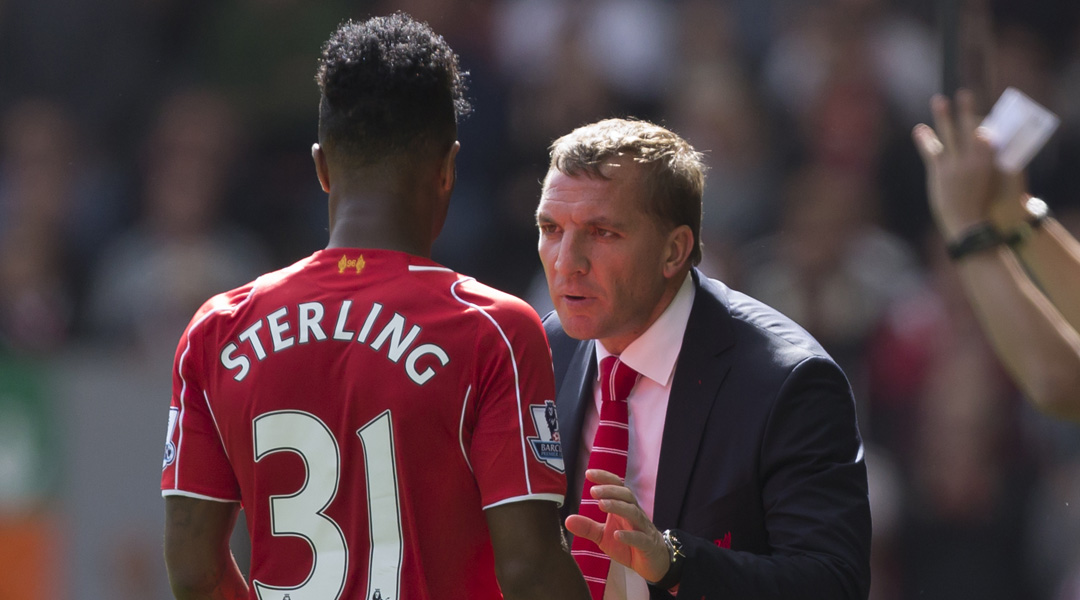
“We need to take a wee step back,” Rodgers said of the situation in February 2013. “If he didn’t kick another ball this season, he’s still had a good one. It is so mentally and physically draining, this league, it hurts experienced professionals.
“This boy has just stepped up from the academy and played football, and earned a contract off that… what you’re seeing now is tiredness of the legs, when before he could go up to people and take them on. That zip has gone, and that’s down to fatigue. Was it to be expected? Yes it was.”
Therefore, despite having established himself as a regular, Sterling didn’t start a Premier League game for nine months. The following campaign he was eased back into the side. He started one of Liverpool’s first 12 matches last season, and was on the bench for the other 11.
Get FourFourTwo Newsletter
The best features, fun and footballing quizzes, straight to your inbox every week.
The blow-up
But when given a chance, he exploded. In December, he scored three goals in the space of four games – at precisely the period where he’d looked exhausted the previous season. The sharpness had returned, his acceleration was still a huge weapon, but more importantly, he’d developed a clinical edge – more efficient with his distribution, more penetrative with his passing, more determined to get into goalscoring positions. The transformation, during that nine-month break from starting matches, was extraordinary.
Today, Sterling is the most exciting English footballer around. He doesn’t have Wayne Rooney’s experience, or Sturridge’s goalscoring figures, but few players are so capable of exciting Liverpool fans, England fans, and neutrals alike. More than anything, English football loves a dribbler.
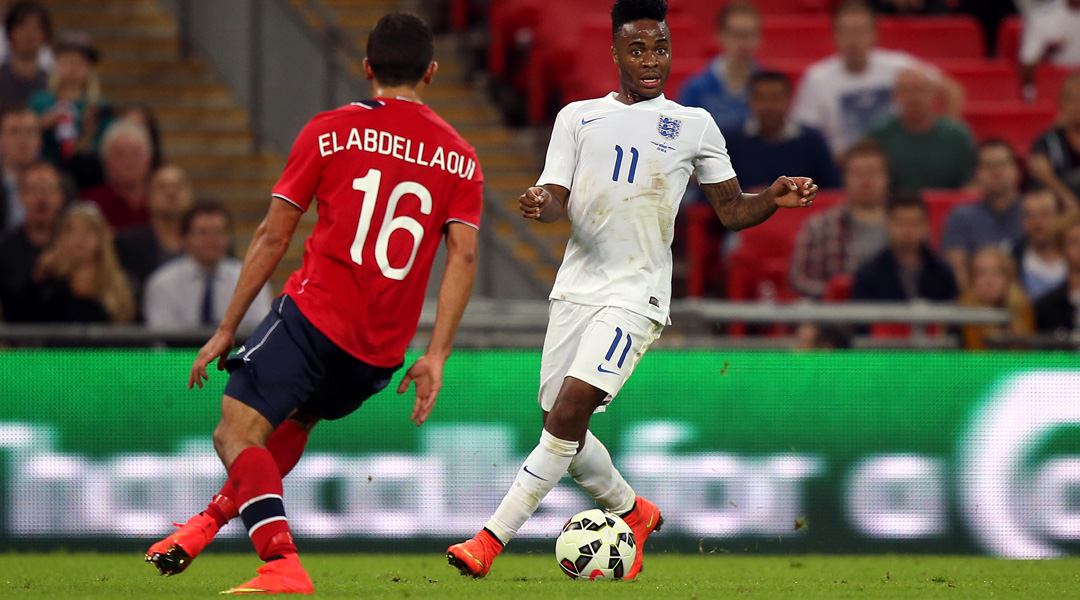
That dribbling ability is Sterling’s outstanding weapon. Not since Robert Pires has the Premier League seen a winger convert such a peculiar running style into efficient attacking play so seamlessly. Sterling’s not a tricky dribbler, not a stepover merchant, but someone who simply glides past opponents with ease. His turn of pace, and his change of direction, are fantastic to watch and terrifying for opposition defenders.
It might sound strange now, but in the middle of the last decade, both Aaron Lennon and Shaun Wright-Phillips were extremely popular new additions to the England side – they weren’t like the existing options, because they took on opponents. Neither fulfilled their potential, and already Sterling is playing at a higher level than both ever managed. The question for Roy Hodgson, of course, is precisely how he uses Sterling’s talent.
The future's red
Replicating Liverpool’s system has been in the back of Hodgson’s mind throughout 2012. The 1-0 friendly victory over Denmark in March was the most obvious sign – he switched to 4-3-3 to accommodate Steven Gerrard, Jordan Henderson, Sterling and Sturridge in their club positions, with Wayne Rooney playing Luis Suarez, and Jack Wilshere as Coutinho. It didn’t quite work, however, and Hodgson moved back to a 4-2-3-1 shape.
Still, something similar must be in his mind now – Sturridge is still banging in the goals, Henderson’s midfield running is fantastic, and Sterling is more exciting than ever. Gerrard might be gone, but Liverpool remain an interesting template.
That’s easier said than done, considering Rodgers’ tendency to switch his system from game to game. He plays a variety of systems, and in the first three games of the season, Sterling has been deployed on the left, on the right, and then, finally, through the middle, at the top of a diamond against Spurs. It might be his best role – it’s certainly where he’s most involved. His positioning and movement is extremely intelligent, always going from ‘in’ to ‘out’, and exploiting the space created by Liverpool’s forwards drawing the opposition centre-backs into poor positions.
For the final part of England’s 1-0 win over Norway this week, Hodgson did something interesting. He changed shape after withdrawing Wayne Rooney, and experimented with Sterling at the top of a midfield diamond, the position he’d played brilliantly in the thrashing of Tottenham at the weekend. He was happy to collect the ball in deep positions, and created a succession of chances on the edge of the box.
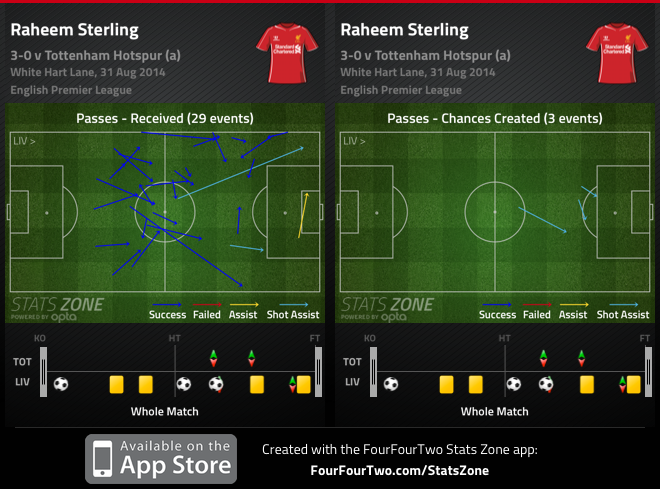
With Sterling as the No.10, England looked better. After the game, Hodgson indicated he is considering this as a serious option for upcoming qualification matches – putting Sterling centre stage, and basing England’s attacking play around him. Of course, to a certain extent England played this way against Italy at the World Cup, with Sterling in the centre and Rooney out wide, a measure of Hodgson’s faith in Sterling that he was trusted to mark Andrea Pirlo. He drifted right, and almost provided a brilliant opening to the tournament with a shot into the side-netting.

Sterling had been bright in his starting wide-left role, too. He was the ‘wall’ for a wonderful one-two with Sturridge midway through the first half, and it was notable how they looked for each other as quickly as possible. Sterling also found Sturridge with a wonderful crossfield pass (which Sturridge controlled when he should have shot first time), before Sturridge attempted to return the favour a later.
The new SAS
Those two have a great relationship, and the best way to allow them to interchange regularly would be by playing Sterling in that advanced role. It would presumably mean Rooney playing as a second striker, which could suit him more than this No.10 role – he no longer has the explosiveness Sterling offers.
Like so many other talented attackers these days, one of Sterling’s best assets is his versatility – he can play left, right, or through the middle. Hodgson will only get the chance to play Sterling around 10 times per year, whereas Rodgers will select him for around 50 games this season. Therefore, more than anything, Rodgers’ decision-making will be crucial in Sterling’s continued development. Judging by the Liverpool manager’s handling of Sterling so far, he’s in safe hands.
